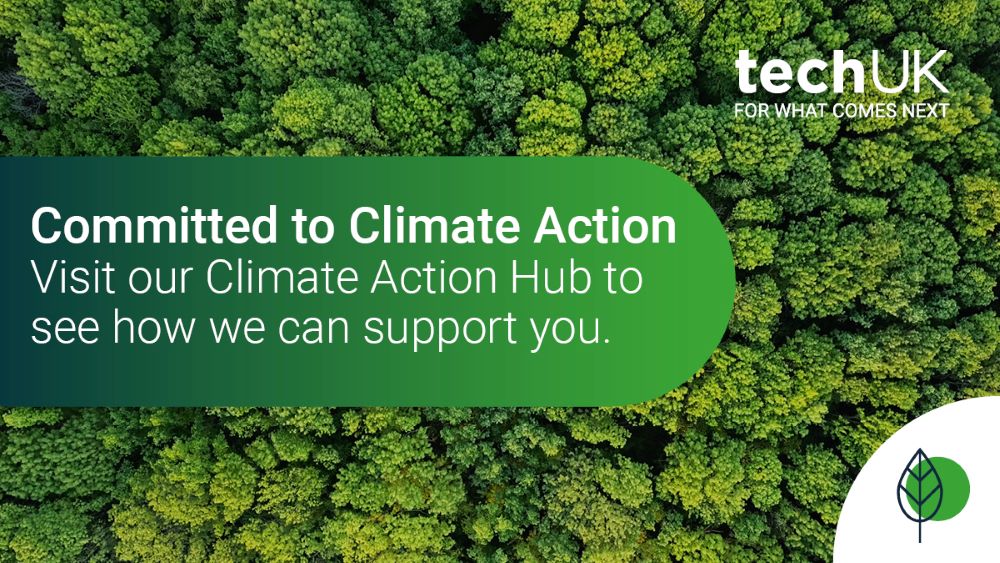Achieving Net Zero through Cloud (Guest blog from Fujitsu)
Authors: Geraint Williams, Head of DX Hub, and David Jones, DX Consultant - Fujitsu
In the realm of corporate sustainability, achieving NetZero is a paramount global goal. The urgency to address climate change prompts organisations to scrutinise operations and implement comprehensive strategies aimed at reducing greenhouse gas emissions across their entire value chain. NetZero objectives involve a commitment to balancing emitted greenhouse gases with an equivalent removal to achieve carbon neutrality.
In pursuing sustainability, organisations extend their focus beyond environmental impact, addressing climate risks, biodiversity collapse, and actively empowering their workforce and communities. This holistic approach signifies a profound dedication to creating a sustainable future.
At Fujitsu, we emphasise this holistic approach as crucial and help clients to meticulously assess their operations and implement comprehensive strategies for reducing greenhouse gas emissions across their value chain. However, the fact remains that IT and Digital Services are an increasingly key component of many of those strategies and will inevitably accelerate the path to NetZero.
The incorporation of cloud-native components, including SaaS and PaaS, is crucial for shaping an effective IT strategy. These elements not only offer an optimised cost model, but hold the potential to significantly decrease resource consumption, thereby contributing to substantial reductions in carbon emissions. This strategic integration aligns with sustainable practices, highlighting the broader positive impact of cloud technology on both operational efficiency and environmental responsibility.
It remains imperative to make substantial strides in cloud sustainability but not all cloud providers are equal, selection should be guided by their carbon emissions, particularly if we aim to expedite accomplishing NetZero targets. An important factor during selection or development of applications is that prioritising energy efficiency should ideally be integral to the development stage, aiming to minimise resource utilisation in code. Although data centres that support cloud offerings are more efficient and have higher server utilisation rates than traditional data centres, the energy savings are currently offset by the increased compute demand from digital.
Several measures continue to drive cloud towards being environmentally sustainable and in turn, exploit the opportunities to address the Environmental Social and Governance (ESG) challenges we face.
ESG Integration in Cloud Strategies
Embedding ESG considerations into cloud strategy development ensures that sustainability is a core principle guiding decision-making. Providing transparent and accurate reporting on energy consumption, emissions, and sustainability efforts fosters accountability and supports informed decision-making.
Visualisation
Cloud providers must ensure; monitoring, analysing, and assessing power consumption and cooling systems through a sensor network designed to adapt to environmental variations. This approach can be extended by optimising air-conditioning efficiency through adjustments based on IT power consumption (heat), fine-tuning fan speeds, adjusting air conditioning temperatures, reducing cold water temperatures in cooling equipment, incorporating outside air, and potentially increasing midcycle operational hours to diminish the overall need for air conditioning power.
Renewable Energy Adoption:
Transitioning to and investing in renewable energy sources for powering data centers is a pivotal step in promoting sustainability within the cloud ecosystem. There needs to be a solid commitment to ensure renewable energy is used to power environments and not just rely on carbon offsetting initiatives as this just passes the problem on.
Advantages of Scale and Design
Larger data centers, justified by economies of scale, necessitate significant investments in buildings, research, and infrastructure. However, a crucial aspect is ensuring a modular design to control and prevent energy waste. Internal modularisation and aligning design with demand will enhance the return on investment by optimising power, cooling, and facilitate efficiency of any additional space. This strategy avoids excess energy consumption and promotes energy-efficient data centers which minimises the carbon footprint.
So Now Cloud Provision is Becoming Sustainable…
Once High-Performance Compute in the Cloud becomes truly NetZero, a world of opportunity to address other environmental challenges becomes exponentially attractive, for example: -
- Joint research by Fujitsu and Atmonia to discover catalysts for clean ammonia production using high-performance computing to perform a large number of quantum chemistry simulations.
- Demand forecasting using a dynamic ensemble AI model to minimise supply chain and food waste at a fast-food company.
- Fugaku super-computer and AI to enable high-speed discovery of causes of cancer drug resistance that would take a normal computer 4000 years.
- Optimising fleet EV charging schedules for delivery vehicles, to ensure alignment with green power generation peaks (partnering with national grid, and arcadis NV).
Conclusion
To achieve NetZero objectives, cloud computing could emerge as a beacon of innovation and sustainability, guiding organisations through the complex terrain of environmental responsibility. As we navigate the challenges posed by climate change, cloud not only provides a technological haven but can also serve as an ally in addressing the broader spectrum of sustainability goals.
The scalability inherent in cloud solutions empowers businesses to dynamically adjust computing resources, fostering efficiency, and reducing unnecessary energy consumption. Optimising operations, enhancing resource utilisation, and minimising environmental impact can also be accomplished by leveraging cloud infrastructure, this adaptability is not just a technological advantage; it's a strategic imperative.
Furthermore, centralised data management enables comprehensive monitoring and analysis of energy usage, facilitating informed decision-making for sustainable practices. Through advanced analytics and insights, organisations can identify areas for improvement, implement energy-efficient measures, continuously refining strategies on the path to NetZero. Tracking these in an ESG platform, brings even greater benefits as reductions are influenced from actionable insights.
Collaboration within the cloud ecosystem and the sharing of best practices further contributes to a collective effort toward sustainability. Cloud service providers are increasingly integrating renewable energy sources into their operations and aligning objectives with a global commitments to reduce carbon footprints. In essence, the cloud is not merely a technological platform; it is a strategic enabler for organisations, its inherent flexibility, scalability, and efficiency align seamlessly with the principles of sustainability.
Cloud Week 2023
News, views and insights on how cloud computing continues to reshape how we live and work. techUK's annual Cloud Week is an opportunity for the tech community to explore key issues in cloud and highlight new ideas and thought leadership from our members.
Cloud computing and the path to a more sustainable future
This techUK insights paper highlights the commitment of our members to a sustainable approach to cloud computing and sets out six core best practice principles for a greener future for the tech sector.
techUK - Committed to Climate Action
Visit our Climate Action Hub to learn more or to register for regular updates.
By 2030, digital technology can cut global emissions by 15%. Cloud computing, 5G, AI and IoT have the potential to support dramatic reductions in carbon emissions in sectors such as transport, agriculture, and manufacturing. techUK is working to foster the right policy framework and leadership so we can all play our part. For more information on how techUK can support you, please visit our Climate Action Hub and click ‘contact us’.
Climate, Environment and Sustainability updates
Sign-up to get the latest updates and opportunities from our Climate, Environment and Sustainability programme.
Upcoming climate events





